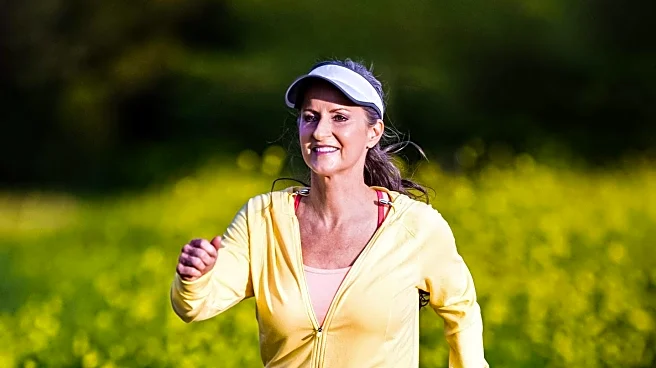What's Happening?
Researchers at Harbin Sport University in China have identified high-intensity yoga as the most effective exercise for improving sleep quality. Analyzing 30 randomized controlled trials involving 2,500 participants with sleep issues, the study found that practicing high-intensity yoga for less than 30 minutes twice a week significantly improved sleep after eight to ten weeks. The research suggests that while various exercises can aid sleep, high-intensity yoga offers the best results overall. The study also highlights the importance of timing exercise to avoid disrupting sleep, recommending workouts at least one to two hours before bedtime.
Why It's Important?
The findings are significant for individuals struggling with sleep issues, offering a practical solution through high-intensity yoga. Improved sleep quality can enhance overall health, cognitive function, and emotional well-being, reducing the risk of chronic conditions associated with poor sleep. The study's emphasis on exercise timing provides valuable insights for optimizing sleep hygiene, potentially influencing public health recommendations and personal fitness routines. As sleep disorders are prevalent, these findings could guide interventions aimed at improving sleep quality and promoting healthier lifestyles.
What's Next?
Further research may explore the mechanisms by which high-intensity yoga improves sleep, potentially leading to new exercise protocols and recommendations. Fitness professionals might incorporate these findings into training programs, offering yoga as a solution for clients with sleep issues. Public health campaigns could emphasize the benefits of exercise for sleep, encouraging individuals to adopt regular physical activity. The study may also inspire innovations in yoga practices and equipment designed to enhance sleep quality.
Beyond the Headlines
The research highlights the interconnectedness of physical activity and sleep, emphasizing the role of exercise in promoting holistic health. Ethical considerations arise in promoting exercise programs, as stakeholders must ensure accessibility and inclusivity for diverse populations. The focus on high-intensity yoga reflects broader societal shifts towards personalized approaches to health and wellness, catering to individual needs and preferences.











